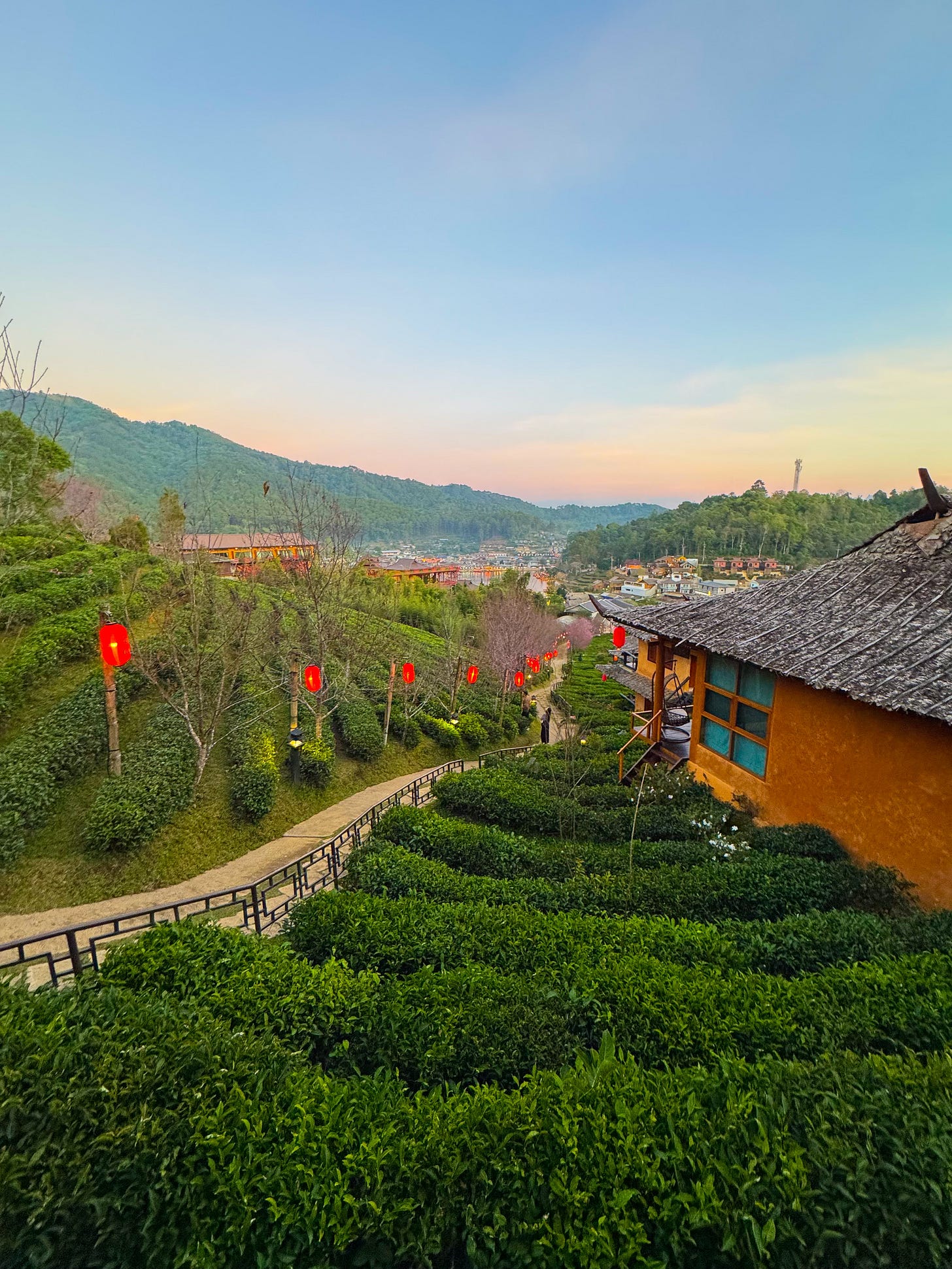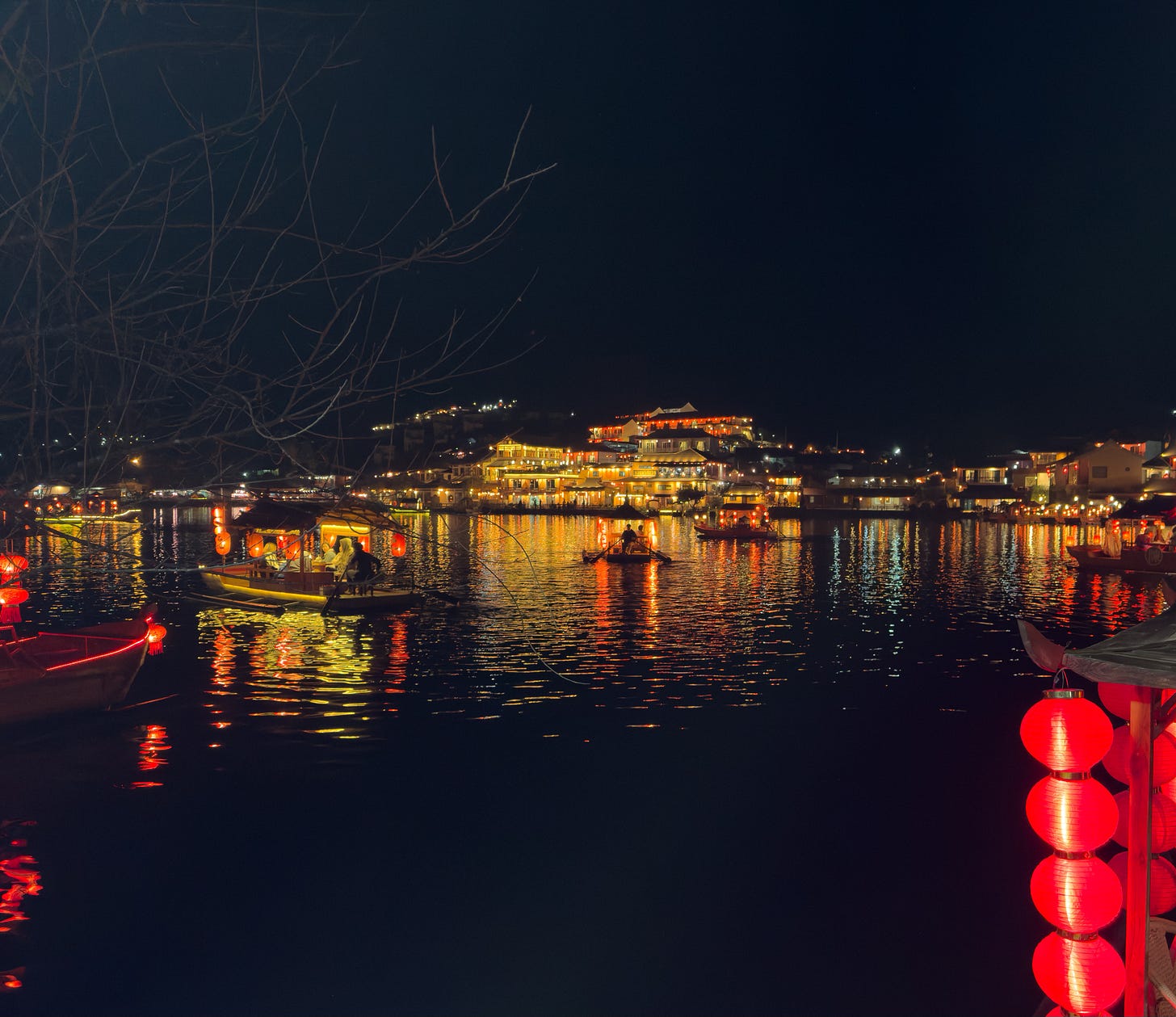Ban Rak Thai - a unique Northern Thai village
Travel back in time to this Chinese inspired village which is still a hidden gem.
This year we decided to embark on our most adventurous motorbike trip yet - the Mae Hong Son loop. In a nutshell this is a circular route (starting and finishing in Chiang Mai Thailand), spanning about 600 kilometres (370 miles) and includes 1800 curves through mountainous terrain. Clearly we were not going to do this in a day…so whilst planning the loop I researched where we should do our overnight stops. Whilst of course the goal was to break up the journey, we also wanted to make sure that at the end of the loop we had seen and experienced Northern Thailand.
By chance I found a few blogs which mentioned Ban Rak Thai. This village seemed to be one of those places which - whilst constituting a small detour from the loop itself (although what is a 50 kilometre detour when you are doing over 600 kilometres?) - seemed to be a must-see.
What solidified the decision to include Ban Rak Thai as a loop pit-stop were the photos we saw online. This destination seems to still be missing from most travel guides and itineraries, so all the images depicted pretty much the same: tea plantations, a lake, breathtaking views - all set in a sleepy village which looked like something out of early 20th century China. We were convinced.
Getting there
Whilst this is definitely one of the prettiest villages we have encountered in Thailand, with a calming and relaxing atmosphere (there is one main road in and out, that is it) - it is in a remote location. The last village before reaching the Thai-Myanmar border, situated 44 kilometres from the closest “big city”, Mae Hong Son, Ban Rak Thai is a whopping 246 kilometres from Chiang Mai.
Forget public transport, you need your own vehicle to get to this village. Several people visit as part of the Mae Hong Son loop as we did, but judging by the car park at our hotel, car rental is a popular option - especially as an overnight stay is recommended. I can see how some visitors will opt to add Ban Rak Thai as part of a day trip, whilst visiting other landmarks in Northern Thailand, although this is a recipe for a very tiring day. You can get a flavour of what this village is about in a few hours by sampling the tea and taking in the views. Having spent practically two full days in Ban Rak Thai, I would say that it is the sunset and the sunrise which make it truly magical.
History of the “Thai Loving Village”
Like many other things in Thailand, this village doesn't go only by one name (or one spelling). Ban Rak Thai is also known as “Ban Mae O” (which you may also find has the spelling “Mae Ow” in some places). The translation being “Thai Loving Village”.
Historically Ban Rak Thai is a Thai-Chinese village founded by former Nationalist soldiers who migrated from the Yunnan Province in China, after the Communist takeover in 1940s.
To say the village is heavily influenced by the “old Chinese” would be an understatement. There are many signs in Chinese, buildings are Chinese-style and much of the population speaks a heavily accented version of Mandarin Chinese (which explains why my very limited Thai was met with a blank stare and more often than not, a response in English).
Staying in Ban Rak Thai
From my research there was one point where everyone who had been to Ban Rak Thai seemed to agree on: stay at the Lee Wine Ruk Resort (which can also be found to be spelt as “Lee Wine Rak”).
Yes there are other options, such as the Chasa Rak Thai Resort or individual cottages which you can find on AirBnB - listed as “farm stays” (the farming element being the tea).
Whilst often times when visiting a place (especially for a short space of time) I want to ensure that the accommodation is as close as possible to the sites I want to see - this isn’t a necessary consideration at Ban Rak Thai. Because everything is at your doorstep.
Booking at the Lee Wine Ruk Resort was, let’s say, a bit of a process. With no dedicated website, this was also the first time that I had seen a listing on sites such as Booking.com and Agoda - with the caveat that you could not book through them.
To secure a villa (there are no rooms in a hotel building) you firstly need to find the Resort’s Facebook page, which then directs you to a reservation website. Payment needs to be made by old fashioned bank transfer which can take up to three days to “clear” - only then will you know your booking has been secured. Clearly this is not a place for those who book last minute.
The moment you arrive at the Resort you know, solely from the views, that you have made the right choice. Whilst there is a steep climb up to your little traditional Chinese style villa which is not for the faint hearted (I do have some concerns about accessibility for wheelchairs), the higher your accommodation the better the view. Be prepared to be greeted with the sight of rows and rows of manicured tea trees and the magnificent lake brimming with wooden boats, with a backdrop of cherry blossoms and Chinese lanterns.
As to the inside of the villas, these are beautifully decorated and spacious with every one of them having an outside porch with swinging chairs - perfect for enjoying tea and appreciating your surroundings. This represents luxury at a reasonable price.
A word of warning! There is air conditioning but, like most units in Thailand, this does not have a heating mode. What do you need heating for? I hear you ask - we are in Thailand after all. What I would say is that, whilst we had been sweating in Chiang Mai only a few days ago, Ban Rak Thai being 1,800 meters above sea level can often get pretty chilly, especially in the evenings and in the mornings (where you will see the fog lift from the lake). In January the temperature read at 17 Celsius (about 62 Fahrenheit) and whilst we would have considered this somewhat of a heatwave if we were back in England, for some reason this was low enough for us to wear every piece of clothing we had brought with us on the trip.
Food and Drink
You shouldn’t leave Ban Rak Thai without sampling their tea and if you fall in love with it, there are plenty of shops where you can buy all the tea varieties you can think of to take back with you.
As to food, this is inspired by Yunnanese cuisine where the following features heavily: pork, oil and fat. Not the place for anyone practising vegetarianism or veganism, nor if you have an allergy to gluten I’m afraid. That said, our dinner featuring the pork belly was to die for. As for breakfast…well I sampled more than a fair share of deep-friend Manou buns with condensed milk as the “dipping sauce”.
Where to eat? We opted for the Resort’s restaurant which has an incredible view of the lake and is right in the centre of the village. It is no coincidence that the Lee Wine Ruk Resort is also known as an “Estate”. In addition to the hotel itself, the tea leaves you see outside your bedroom window are part of a working tea farm, the product of which is then featured in the restaurant, tea shop and coffee shop.
The main road running through the village has several other restaurants featuring the same Yunnanese style cuisine, as well as street vendors grilling sweet potatoes and chicken skewers. If you venture to the walking street, you will find this is lined with food stalls and small tables right by the water with small individual grills where you can cook your pork and cabbage to your taste.
How we spent our time
Ban Rak Thai is a wonderful place to relax. At this stage of the loop we had been riding for three days and the last two nights had really comprised of going to bed shattered and hitting the road first thing in the morning. An overnight stay in this village was what we needed to recuperate: there is an unexcapable peaceful vibe to it.
Unsurprisingly tea is a big component of your stay in Ban Rak Thai and so is the lake. We took advantage of this as much as possible: taking a boat cruise at sunset and then watching the boats go by as we ate our dinner.
If you stop to think for a moment you will see that there are not many signs of “day to day life” in this village: we did not see any grocery stores, offices or even a medical practice. There is a Disney-style quality to it which is not a bad thing.
Ban Rak Thai may not (yet) be featured in the “Top Ten Things” to do in Northern Thailand, which makes it the perfect time to go.
If you enjoyed this post then you might want to watch our travel vlog of our time at Ban Rak Thai:









OMG thank you Sara for this! It looks amazing. You inspired me to do this loop! Added to the list 👍
It was so much fun!